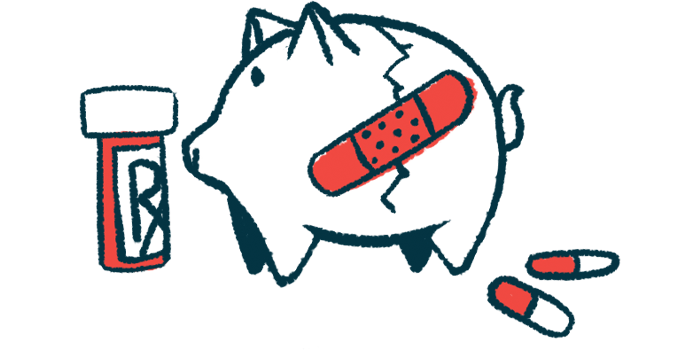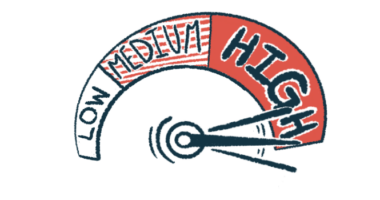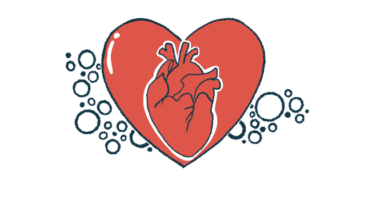GPA is most common type of ANCA-associated vasculitis in Italy
Condition linked to worse symptoms, higher mortality and healthcare costs

Granulomatosis with polyangiitis (GPA) is the most common type of ANCA-associated vasculitis (AAV) in Italy and is linked to worse symptoms and higher mortality and healthcare costs than microscopic polyangiitis (MPA), another common AAV type, a study finds.
Using immunosuppressive glucocorticoids was also associated with higher costs in both GPA and MPA patients, with medications and hospitalizations accounting for the biggest part of the costs.
The study offers an insight into “the clinical complexity and economic burden for management of patients with autoimmune diseases under chronic [long-lasting] immunosuppression,” the researchers wrote in “Profile, Healthcare Resource Consumption and Related Costs in ANCA-Associated Vasculitis Patients: A Real-World Analysis in Italy,” which was published in Advances in Therapy. The findings show the need for “further efforts … to optimize AAV management, with the goal of ameliorating the clinical outcomes of AAV patients and alleviating the resulting economic burden.”
AAV is an autoimmune disease that causes small blood vessels to become inflamed, which can damage tissues and vital organs, including the kidneys. The disease is classified into three types — MPA, which is more commonly associated with kidney involvement; GPA, generally linked to a higher relapse rate; and EGPA, the rarest form.
Treating AAV mainly involves immunosuppressive agents, most often glucocorticoids. But these are “associated with significant complications, ultimately leading to a relevant clinical and economic burden,” the researchers wrote, noting clinicians must “deal with the delicate balance between avoiding disease recurrence and keeping a watchful eye on the clinical impact of immunosuppression, mostly based on the [glucocorticoid] use.”
Comparing outcomes of GPA, MPA in Italy
Researchers in Italy set out to assess whether MPA or GPA is the most common form of AAV in the country and describe the demographic and clinical features of patients, how they are treated, their disease course, and their use of healthcare resources.
They relied on information from databases that cover about 12 million people across Italy and identified 859 adults with one of the two most common forms of AAV. GPA affected 83% of the included patients, while 17% were diagnosed with MPA. In both groups, the patients’ ages were about 57-58.
At 1.3 versus 1, GPA patients had a significantly higher score in the Charlson Comorbidity Index (CCI) than those with MPA, indicating there were more or more severe simultaneous health conditions that can shorten survival.
Problems in the musculoskeletal system and connective tissue were the most common causes of hospitalization in both groups (more than 14%). Breathing issues were the most common cause of hospitalizations in GPA patients (12.3%). Kidney problems were in MPA patients (16.4%).
At the first year of follow-up, most patients received treatment with whole-body glucocorticoids (79.4% in the GPA group, 78.8% in the MPA group), while more than a third were given other immunosuppressive agents (38.1% and 39.7%)
GPA patients were significantly more likely to be hospitalized due to AAV than MPA patients (28.5% vs. 13%). The mortality rate was also higher in the GPA group (17.8% vs. 11.6%), but this difference wasn’t statistically significant. The GPA group did show a significantly shorter time to death, however.
“These outcome variables indicated GPA as a disease form with a worse [presentation],” the researchers wrote., adding that kidney failure was the exception, being more common among MPA patients (15.8% vs. 10.2%) and occurring significantly later — after 748 days vs. 265 days).
During the first year of follow-up, GPA patients were admitted to the hospital significantly more often, both for regular hospitalizations (average 0.7 vs. 0.3) and day admissions (average 0.3 vs. 0.1).
Comparing GPA, MPA costs
The total healthcare costs in a year averaged €8,564 (about $9,038) per patient and were higher among GPA patients (€9,262 vs. €5,207, the equivalent of about $9,775 vs. $5,496).
Using glucocorticoids was linked to an increase of about €1,487 ($1,569), statistical analyses showed. A higher CCI score translated into an increase of about €1,142 ($1,205). Older age was also linked to higher costs, with each passing year raising them by €28.2 (nearly $30).
“We found that [glucocorticoid-treated] patients were characterized by a trend towards increased overall higher healthcare costs, mainly driven by drug expenses and outpatient specialist services, but partly counterbalanced by lower costs for ordinary hospitalizations, except in the MPA group,” the researchers wrote.
During follow-up, medication costs were about three times as high among glucocorticoid-treated patients versus those who didn’t receive them (€2,404 vs. €874, equivalent to about $2,537 vs. $922). The gap was larger for GPA patients.
“The present real-world analysis confirmed that AAV is associated with unfavorable clinical and economic outcomes,” the researchers wrote. “Our findings confirm the elevated costs for disease management of this patient population that could be related to both AAV forms, to older age and complex [simultaneous condition] profiles, and to the need for chronic immunosuppression.” Drug expenses and hospitalizations were the biggest cost item “on the overall burden, confirming the clinical complexity of patients under chronic or prolonged immunosuppression with [glucocorticoids].”







